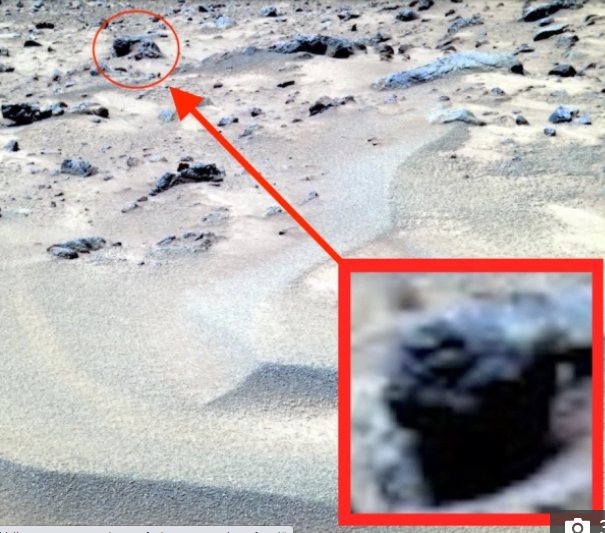WHAT PLANET ARE THEY ON? UFO hunters spot ‘ancient alien face, skulls and primitive carvings’ in Nasa’s latest Mars photo

WACKY conspiracy theorists are at it again – and this time they claim to finally have proof of life on Mars.
One online nutters thinks he’s found alien faces, skulls and primitive carvings in photos of the red planet.
He even thinks he’s got proof that the Ancient Greek philosopher Socrates was sent to Earth from Mars.
Scott C Waring, who runs the crackpot website UFOSightingsDaily, reckons he’s found an alien face on Mars in photos taken by Nasa’s Spirit rover 14 years ago.
“This is odd I know but I found another face on Mars,” the controversial blogger said.
“This face has a lot of detail so that we can truly make out what that alien species looked like.
“I can easily make out the neck, bearded chin, cheeks, mouth, ears, nose eyes and forehead.”
Another rock picked out by the eccentric UFO-hunter supposedly shows the famous ancient philosopher Socrates.
“This is Socrates the great greek philosopher and teacher. Every detail about the face matches perfectly.
“Was Socrates from Mars? Perhaps.
“That would explain his advanced and organised way of thinking and how he tried to influence the world with it.”
Waring claims knowing more about the “faces” on Mars could help us if we ever meet an alien species.
“Why is this important? A person’s face is their autobiography,” he said.
“By seeing the face before meeting the species, it can make people relax knowing what they will be encountering.”
Waring’s claims are not backed up by scientific evidence – space boffins have not found any clues that there is, or ever was, intelligent life on Mars.
Alien expert Nigel Watson, author of ‘UFOs of the First World War, said Waring’s claims were little more than fairy tale.
“It is a stretch of the imagination to see this rock as representing the head of Socrates,” Watson told The Sun.
Waring’s finds are likely the result of pareidolia, a bizarre effect which causes the brain to see shapes, structures and patterns where they do not exist.
According to Nasa: “Pareidolia is the psychological phenomenon where people see recognisable shapes in clouds, rock formations, or otherwise unrelated objects or data.



 Creators of mankind
Creators of mankind Description of “Tall white aliens”
Description of “Tall white aliens” Where they came from?
Where they came from? About hostile civilizations
About hostile civilizations The war for the Earth
The war for the Earth “Tall white aliens” about eternal life
“Tall white aliens” about eternal life Video: “Nordic aliens”
Video: “Nordic aliens” Aliens
Aliens Alien encounters
Alien encounters The aliens base
The aliens base UFO
UFO Technology UFO
Technology UFO Underground civilization
Underground civilization Ancient alien artifacts
Ancient alien artifacts Military and UFO
Military and UFO Mysteries and hypotheses
Mysteries and hypotheses Scientific facts
Scientific facts


















